A company announces a major restructuring, but employees only hear about negative consequences of it through office gossip. Anxiety spreads. Morale drops. Productivity plummets. The company’s leadership scrambles to regain control, but trust has already been broken.
Sound familiar? Trust issues between employees and leadership are prevalent in many organizations, leading to decreased morale and productivity. For instance, a 2017 Forbes article highlighted that “63% of employees don’t trust their leader.” Furthermore, the 2024 Edelman Trust Barometer reported that “61% of people don’t think business leaders are telling the truth.” These statistics underscore a significant disconnect that organizations must address to foster a more transparent and trustworthy workplace environment.
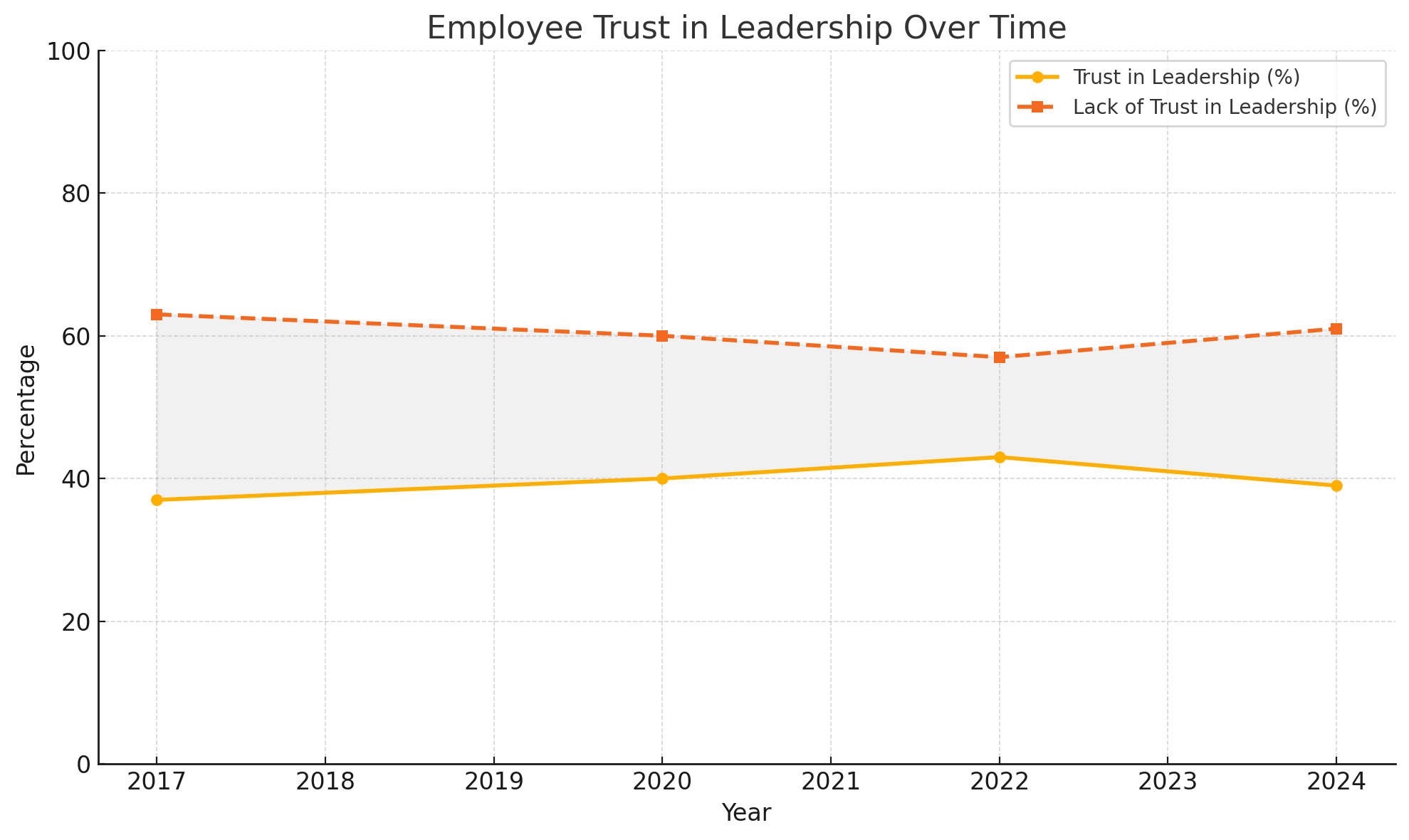
But what does transparency actually mean for leaders? And how do they balance the benefits of openness and accountability with the crucial need for confidentiality?
What Does Transparency in Leadership Really Mean?
Being transparent doesn’t mean spilling every company secret or overwhelming employees with unnecessary details. It means leading your organization with honesty leadership transparency, clarity, accountability and openness, ensuring that your team understands what’s happening, why it’s happening, and how it affects them.
Effective communication from leadership is pivotal for fostering employee engagement and ensuring alignment with organizational goals. According to the Society for Human Resource Management (SHRM), “Regular, transparent communication builds trust. SHRM data shows that 85% of employees said they feel more engaged when their leaders communicate transparently.” SHRM

Furthermore, SHRM emphasizes that “transparent communication is equally critical. Leaders must consistently reinforce cultural values through storytelling, internal messaging, and recognition programs.” SHRMAt its core, transparency involves:
Clear communication – Sharing company goals, decisions, and challenges openly.
Consistency in actions – Following through on promises and aligning words with deeds.
Accountability – Owning mistakes and demonstrating integrity.
When leaders embrace these principles, they create an environment effective leadership where a culture of openness, honesty and trust flourishes.
Why Transparency Matters: The Business Impact

Reflect on a time when you felt uncertain about your job security. How did it impact your productivity and motivation? A lack of trust in leadership can significantly undermine employee engagement and performance. As highlighted by SHRM, “The consequences of a lack of trust can be significant, impacting employee productivity, engagement and ultimately retention.” SHRM
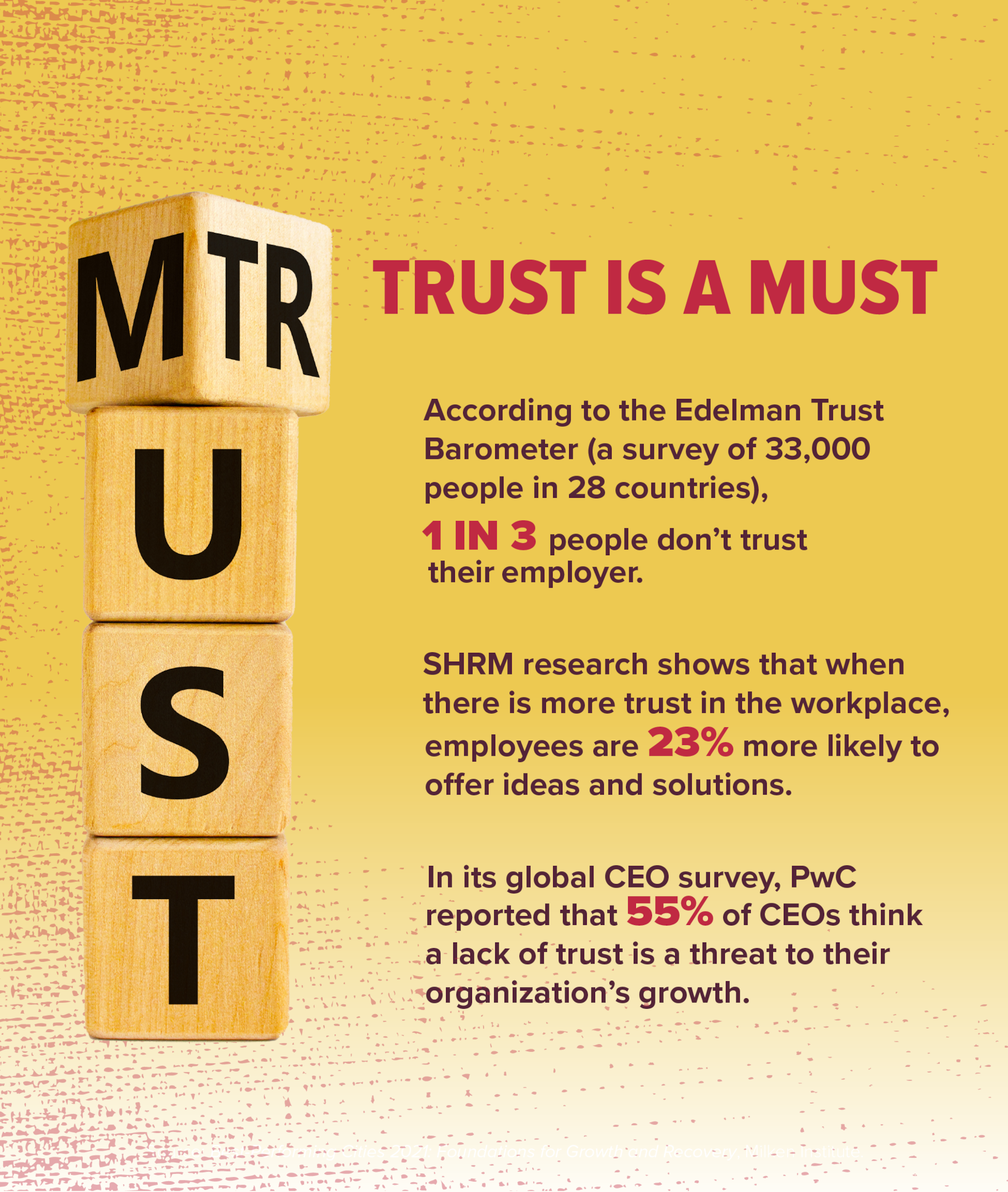
On the flip side, companies with a culture of honesty and transparency report:
More engaged employees – Transparent workplaces have engagement levels nearly three times higher than secretive ones.
Lower turnover rates – Employees who trust their leaders are half as likely to look for a new job.
Better financial performance – Companies with high-trust cultures outperform their competitors by in total returns to shareholders (Gallup).
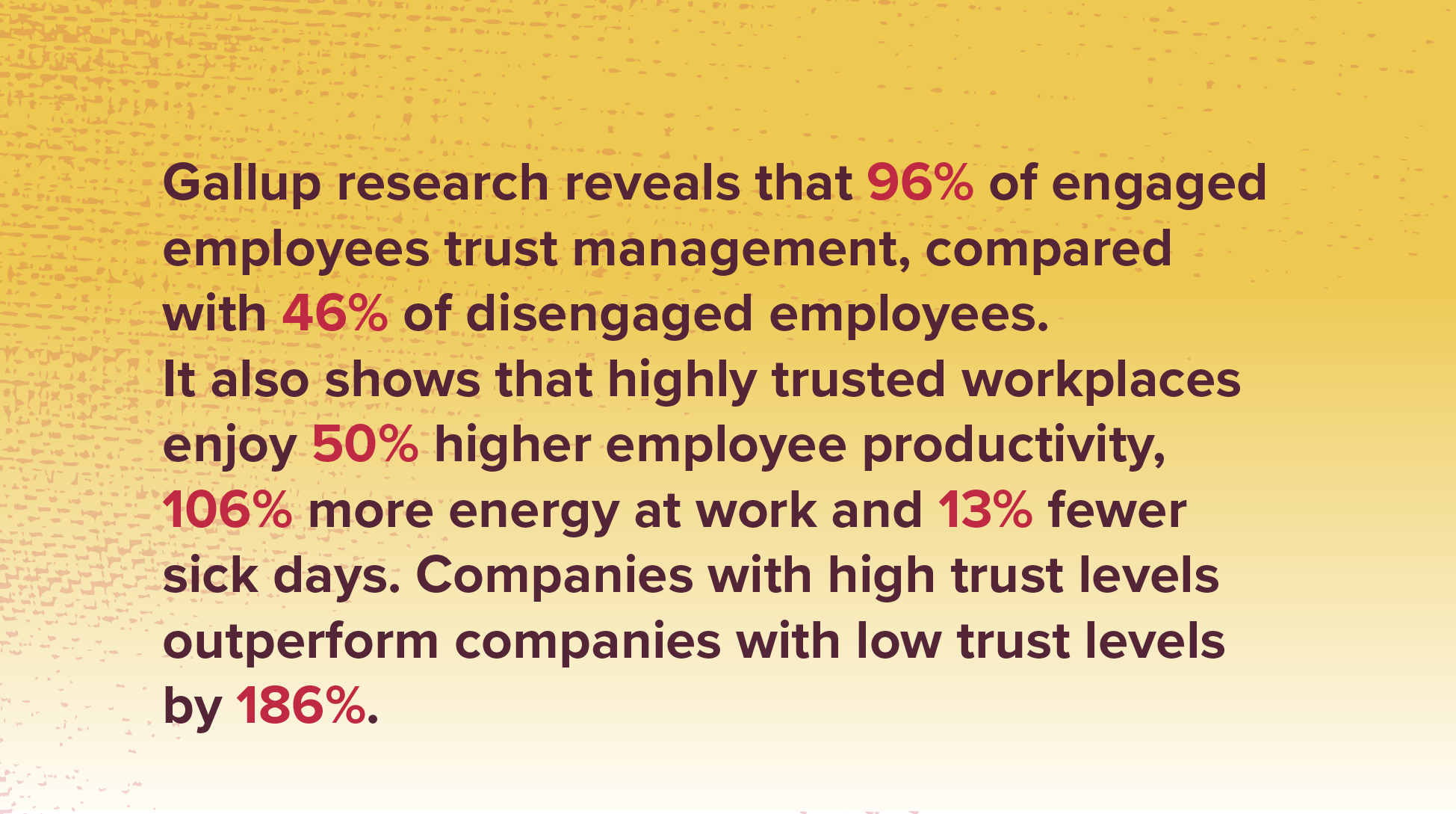
The Link Between Transparency and Employee Retention
Trust isn’t just a buzzword—it’s a measurable business advantage.
The Challenges Leaders Face with Transparency
Transparency in leadership is challenging. According to Gallup, only 21% of U.S. employees strongly agree that they trust their organization’s leadership, down from 24% in 2019.
So why do leaders struggle with being open?
The Common Roadblocks
- Fear of looking weak – Acknowledging mistakes is often perceived as risky by leaders; however, embracing this vulnerability can significantly enhance their effectiveness. A study by The HOW Institute for Society revealed that “88% of employees say moral leadership is more urgent than ever,” highlighting the growing expectation for leaders to act ethically and transparently. Furthermore, when leaders openly admit their errors, it fosters a culture of accountability and continuous improvement within organizations. As noted by SHRM, “When leaders don’t take responsibility for their mistakes, it can have a negative effect on employee morale.”
- Misinterpretation of information – Sharing financial struggles, for example, might make employees nervous instead of fostering trust.
- Balancing transparency with confidentiality – Some details (like layoffs or mergers) can’t be shared too soon without causing unnecessary panic.
So, how do leaders navigate these challenges?
How Leaders Can Foster Transparency

Before we dive into solutions, take a moment to assess your own leadership transparency. Where do you stand?
✅ Do you regularly communicate business goals and decisions to your team?
✅ Do you have transparent leaders provide honest updates—even during difficult times?
✅ Are employees encouraged to ask questions and give feedback?
✅ Do you share the reasoning behind major decisions?
✅ When mistakes happen, do you own them and explain the steps to improve?
✅ Do you make company performance data (or relevant insights) available to employees?
✅ Are your policies and leadership expectations clear and consistent?
Scoring:
If you checked 6-7: 🎯 You are highly transparent and fostering trust in your team!
If you checked 3-5: ⚡ There’s room for improvement—try adding more openness in key areas.
If you checked 0-2: 🚨 It’s time to rethink how transparency fits into your leadership approach!
Building trust within an organisation doesn’t necessitate a complete cultural overhaul. Research indicates that when leaders implement specific, trust-building actions, the impact can be substantial. For instance, Gallup found that when employees strongly agree that their leaders communicate clearly, inspire confidence in the future, and lead and support change, 95% fully trust their leaders. Gallup.com
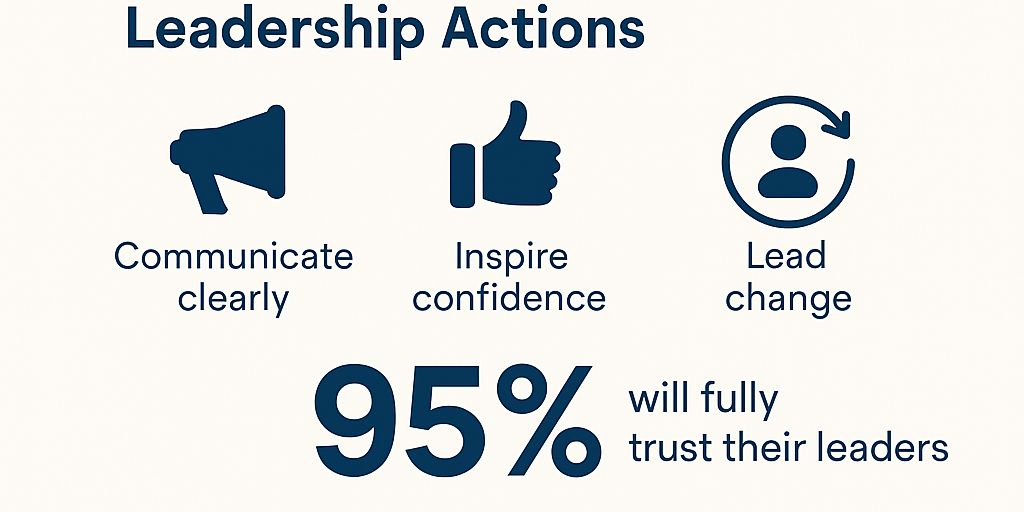
Furthermore, fostering a high-trust environment yields significant benefits. According to the Harvard Business Review, individuals working in high-trust companies experience 74% less stress, 106% more energy at work, and 50% higher productivity compared to those in low-trust organizations. Harvard Business Review
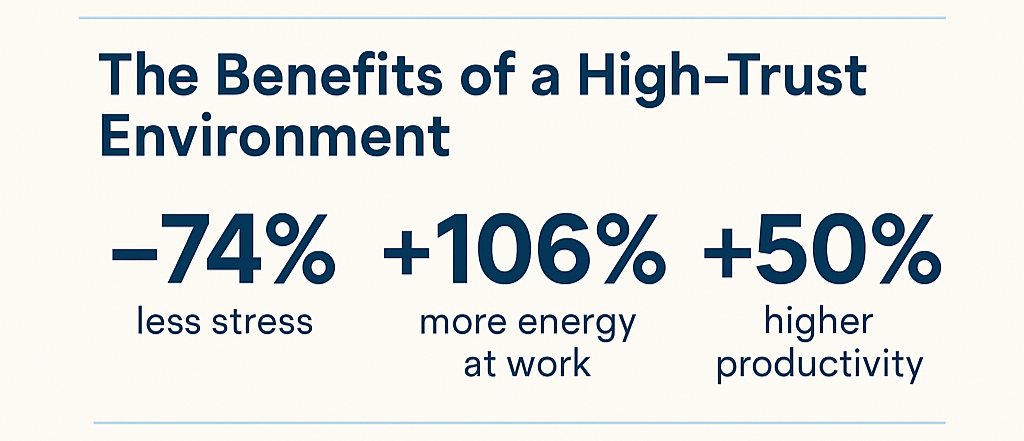
1. Encourage Open Dialogue

Have you ever had a boss who never explained their decisions? It’s frustrating, right? Employees feel the same way. That’s why high percentage of workers prefer transparent leaders, who say transparent leaders encourage honest conversations and feedback.
Simple ways to do this:
✔ Hold regular team meetings and Q&A sessions.
✔ Encourage employees to ask tough questions.
✔ Create an open-door policy for discussions.
2. Explain the ‘Why’ Behind Decisions

Transparency isn’t just about what you communicate, but how you do it. If you’re rolling out a decision making a serious decision making a big change, don’t just announce the decision making it—explain why it’s happening.
For example, when Microsoft decided to shift to a hybrid work model, they didn’t just say, “Here’s our new policy.” They backed it up with data on productivity, and employee engagement and satisfaction, feedback, organizational success and long-term business goals. As a result, employee satisfaction and trust in leadership increased by higher.
3. Admit Mistakes and Course Correct

What happens when leaders pretend everything is fine when it’s not? Employees see right through it. The reality is, leaders who admit mistakes build more trust than those who don’t.
The key? Be honest about what went wrong, take responsibility, but also share the solution. People respect a leader who says, “We made a mistake, here’s what we’re doing to fix it.”
4. Make Key Information Accessible

Have you ever wondered why some companies seem to have a culture of openness while others feel like fortresses? A big reason is access to information.
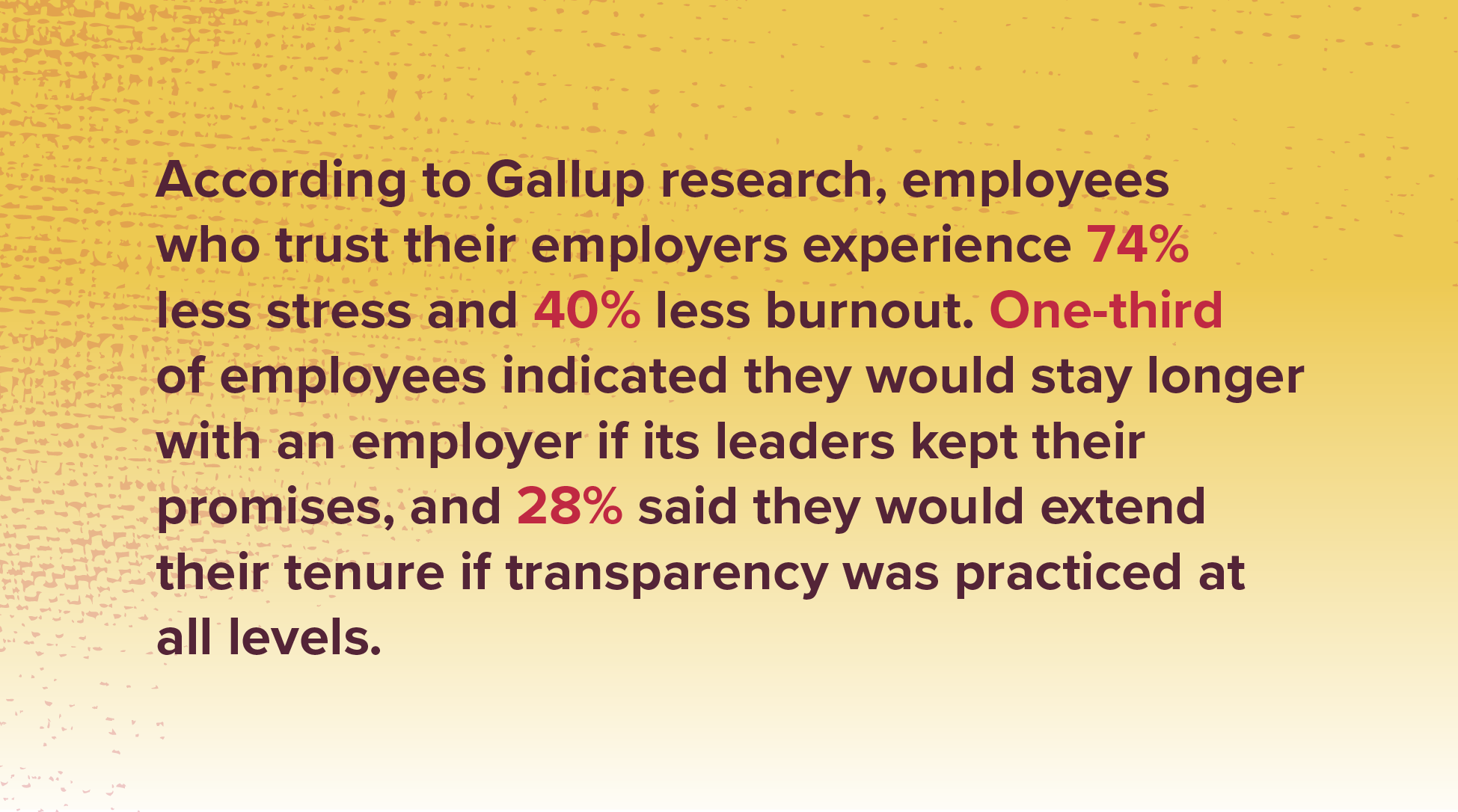
Companies that regularly update employees on financial health, company goals, and progress have higher job satisfaction rates.
Employees who understand their company’s strategy are twice as likely to trust leadership.
Even small actions—like sharing progress reports, team updates, organizational goals, or leadership memos—make a big impact on individual and team achievements.
Real-Life Examples of Transparency in Leadership
Company | Transparency Policy | Impact |
|---|---|---|
Patagonia | Publicly shares sustainability reports and admits areas needing improvement. | Increased customer trust and high employee retention. |
Netflix | Radical transparency on salaries, feedback, and decision-making. | Boosted innovation and engagement, leading to high-performing teams. |
Buffer | Openly shares salaries, revenue, and hiring decisions with the public. | Employees feel valued, increasing retention and attracting top talent. |
This structured breakdown shows how different industries implement transparency successfully.
Patagonia: Transparency as a Competitive Advantage
Outdoor retailer Patagonia is known for openly sharing its environmental impact reports. Instead of hiding flaws, they are transparent leaders who acknowledge areas where they need to improve. The result of transparent leadership? Customer trust and employee loyalty have skyrocketed, and they retain top talent longer than competitors.
Netflix: The Power of Radical Transparency
Netflix is famous for its “radical transparency” policy. Employees know exactly how the company is performing, and leadership shares key decisions openly. This approach to leadership transparency has created one of the most engaged workforces in the tech industry.
Common Questions About Transparency in Leadership
1. How does transparency impact employee morale?
It boosts organization and morale by creating and fostering a sense of trust and reducing uncertainty. Employees in high-trust environments report more energy at work.
2. Can transparency ever backfire?
Yes—when it’s not done thoughtfully. Oversharing sensitive information and open communication can cause stress. The key to effective communication and open communication is to be open but also strategic about what and when you communicate.
3. What’s the easiest way to get leaders to start being more transparent as a leader?
Start by explaining decisions more clearly, inviting employee feedback and input, take responsibility making informed decisions, and owning mistakes. Even small steps can make a difference.
Conclusion

At the end of the day, transparency in your organization, culture and leadership isn’t just a leadership trend—it’s a necessity. The data speaks for itself: employees trust, engage, and perform better when leaders are using open communication with, transparent leadership and honest.
The real question is: What’s stopping more leaders from embracing transparency?
For those willing to take the leap, the rewards—stronger teams, higher employee engagement,, and fostering a thriving workplace—are well worth it.

A trailblazer in humanising leadership and building high-resilience teams. As a former United Nations Peacekeeper, he leverages his high-stakes experience to redefine leadership dynamics. With a career distinguished by numerous accolades, Joseph now helps organizations thrive through a human-centric approach, enhancing performance, productivity, and workplace culture.







